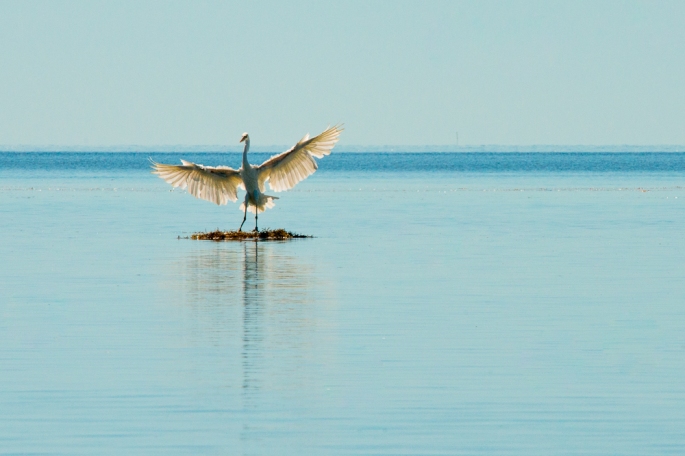Sept. 24, 2016: We had spent a good part of the afternoon outrunning building thunderheads and dark walls of rain. The little skiff went about 80 miles that day, keeping us safe yet in suspense through building waves, miles offshore. When we made the final turn for home, an ominous rainstorm blocked our path. We’re going to just have to go through this one and finally take our punishment, we thought, as we prepared our gear for a deluge. But as we drew closer, the storm rapidly broke up, welcoming us home with a rainbow to nowhere. Any weather bugs out there know anything about this phenomenon?
Tag: quixotic
Great White Heron
Sept. 10, 2016: The great white heron is a homebody. Out of the whole world, they choose to only live in the Keys and parts of the Everglades. Nearing 5 feet tall with 7-foot wingspans, they are the largest of all herons. There is still some scientific debate as to whether they are just a color morph of the great blue heron, but many are leaning toward them being a separate species, in part because they are larger than the blues, don’t share their propensity to migrate thousands of miles, and as John James Audubon pointed out in the 1830s, have decidedly more pointed tempers, at least  when forced into captivity. They can be distinguished from great white egrets by their yellow legs (egrets’ are black) and seen in the Keys wading and fishing near shallow-water mangroves, and especially in their namesake Great White Heron National Wildlife Refuge.
when forced into captivity. They can be distinguished from great white egrets by their yellow legs (egrets’ are black) and seen in the Keys wading and fishing near shallow-water mangroves, and especially in their namesake Great White Heron National Wildlife Refuge.
Blog post title
Sept. 17, 2016: Beautiful yet irritating, moon jellyfish live here year-round but increase in numbers as winds and currents usher them near the reefs and shore from late August to October. The part that stings are their tentacles, which are short, fortunately, and to most only leave a red, itchy-stingy splotch for a few hours. However inconvenient they may be to fall snorkeling, they are a primary food for the critically endangered leatherback and other sea turtles, sunfish and other fish including tuna. They are pretty chill creatures, literally just going where the flow takes them, but are a bit immodest — the clover-pattern in the center are actually its gonads. We saw this guy in the Key West National Wildlife Refuge west of town.


